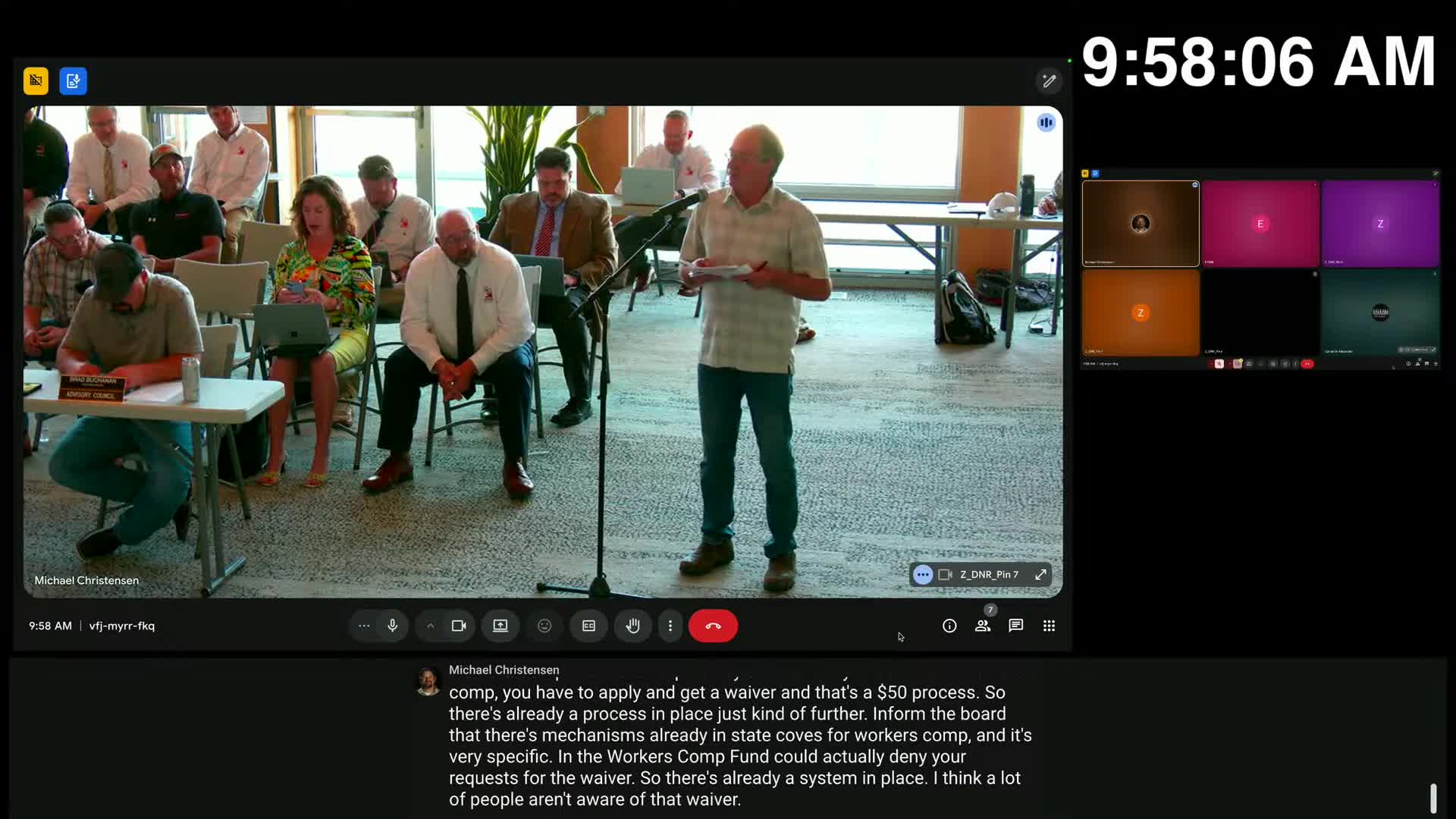Wildlife Board discusses regulation changes for guides and outfitters in Utah
June 13, 2025 | Utah Department of Natural Resources, Utah Government Divisions, Utah Legislative Branch, Utah
Thanks to Excel Chiropractic and Scribe from Workplace AI , all articles about Utah are free for you to enjoy throughout 2025!

This article was created by AI using a video recording of the meeting. It summarizes the key points discussed, but for full details and context, please refer to the video of the full meeting. Link to Full Meeting
One of the key topics was the necessity for clearer guidelines regarding the role of wranglers in remote areas. A guide and outfitter expressed the importance of having designated personnel to manage livestock, emphasizing that clarity in regulations would enhance safety and efficiency for those venturing into the wilderness.

Before you scroll further...
Get access to the words and decisions of your elected officials for free!
Subscribe for FreeThe conversation also touched on the training requirements for licensed guides. Currently, the process involves minimal oversight, with only a background check and a fee of $75 needed to obtain a license. Concerns were raised about the lack of comprehensive training, suggesting that a more rigorous process could better prepare guides for their responsibilities.
As the board reviewed these issues, it became evident that many of the concerns raised would need to be communicated to the legislature. Board members acknowledged the importance of gathering input from those directly affected by the regulations, ensuring that their voices are heard in future discussions.
Another significant point of contention was the fee structure for outfitters. Some members proposed a graduated fee schedule, arguing that small-time outfitters who guide only a few hunts each year should not be subjected to the same fees as larger operations. This suggestion was noted for further consideration, although it was clarified that any changes would ultimately be up to the legislature.
The meeting concluded with a sense of urgency, as board members recognized the tight timeline for implementing changes. They expressed appreciation for the efforts made thus far and the need for ongoing dialogue to refine regulations that impact the guiding and outfitting community.
As the Wildlife Board prepares for future discussions, the focus remains on balancing the needs of the industry with the overarching goal of wildlife conservation and public safety. The outcome of these deliberations will likely shape the landscape for guides and outfitters in Utah for years to come.
Converted from Wildlife Board Meeting 6/12/2025 meeting on June 13, 2025
Link to Full Meeting
Comments
View full meeting
This article is based on a recent meeting—watch the full video and explore the complete transcript for deeper insights into the discussion.
View full meeting





